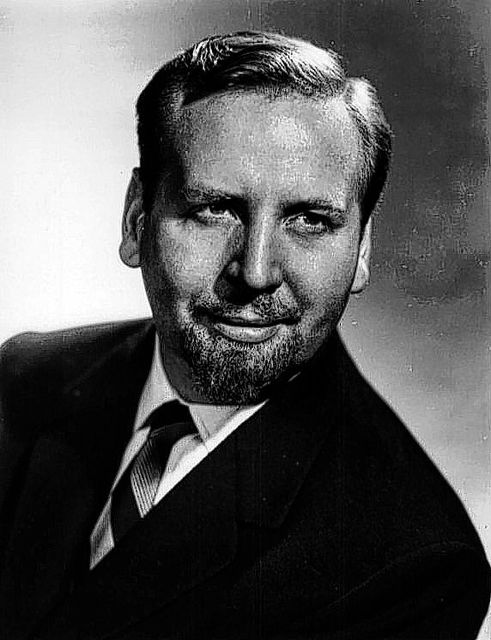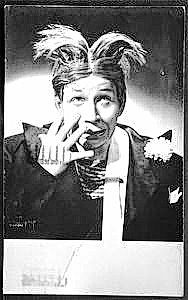

From August 1948 through May 1949, the Washington Rotary Club sponsored 10 monthly variety shows at the high school auditorium on Temple Street. Promoted with the slogan the “Best Is Yet to Come,” the shows had a twofold purpose: to bring some quality, live entertainment to Fayette County and raise money to hasten construction of the swimming pool, which opened in June 1950 on Eyman Park Drive.
Each production included eight to 10 acts presented against the backdrop of a different dance orchestra. Skitch Henderson, one of America’s best-known dance band leaders, led the orchestra at the October 1948 show.
The shows featured first-rate entertainers from radio, vaudeville, Broadway, and Bob Hope’s USO tours. The Rotary Club booked the orchestras and nearly 100 acts through Hollywood Productions, a large talent agency based in Los Angeles.
All of the performances took place on Wednesday nights. An adult ticket cost $1.25, but reserved seats went only to those who had purchased season tickets for the entire 10-show series. After the 1,100-seat auditorium was filled to capacity for the shows in August and September 1948, planners scheduled two performances at 7 p.m. and 9:15 p.m.—for each of the eight remaining productions. Attendance for all 10 productions totaled nearly 14,000 persons.
The audiences saw vocalists, dancers, magicians, jugglers, and a professional whistler. There were marionettes, contortionists, slapstick comedians, roller skaters, yodelers, tumblers, and a rope-spinning comedian who reminded many of Will Rogers. And there were animal acts, too. These included a dancing dog and a gaggle of African lovebirds that walked a tightrope and pushed miniature baby carriages.
Comedian Dick Burns performed at the first show in August 1948. In makeup and costume, he resembled Harpo Marx. Burns amused the audience with his pantomimes, comic playing of the xylophone and assorted novelty tricks.
Each program featured an act of local talent. For example, in November 1948, Hazel Engle, a 12-year-old pianist from near Bloomingburg, played two classical compositions. In February 1949, Richardson Palmer, a young percussionist from Washington C. H., pounded away on several types of drums with flair and élan.
The highlight of every show was the introduction of an “Honor Citizen”—-a person recognized for having lived a life of unselfish community service according to the “Golden Rule.” A committee of 25 men and women from the city and county chose the 10 “Honor Citizens” on behalf of the Rotary Club. Each month’s “Honor Citizen” was introduced from the stage and the person’s good deeds recounted. The honoree was presented a jeweled pin, symbolic of having lived by the “Golden Rule.” The identities of the “Honor Citizens” and local entertainers were not revealed until the night of the shows.
The first “Honor Citizen” was David Whiteside, superintendent of the Fayette County children’s home. The nine other honorees in order of their recognition were: Emma Jackson; Annetta Rowe; Agnes Kerrigan; Asa Murry; Elmer Armbrust; Susan Fite; Ray Maynard; Ilo Larrimer; and George Hall.
Emma Jackson and Annetta Rowe were active, earnest members of the First Presbyterian Church and the Grace Methodist Church respectively. Agnes Kerrigan and Susan Fite were retired school teachers. Asa Murry was a retired grocer from Good Hope, while Elmer Armbrust operated a stone quarry and a ready-mix concrete plant. Ray Maynard had retired in 1946 as head of the men’s clothing department at Craig’s department store. Ilo Larrimer was a leading member of the Bloomingburg Presbyterian Church and a tireless Red Cross volunteer; George Hall had been the Washington C. H. fire chief since 1936.
The shows were costly to produce. After all expenses had been paid, the “Best Is Yet to Come” netted only $1,000 for the swimming pool fund. Nevertheless, the variety shows heightened the public’s interest in building the swimming pool. The shows provided colorful entertainment at a modest cost to the patrons and further fostered the vibrant community spirit that was so evident in Fayette County in the years immediately following the end of World War II.



